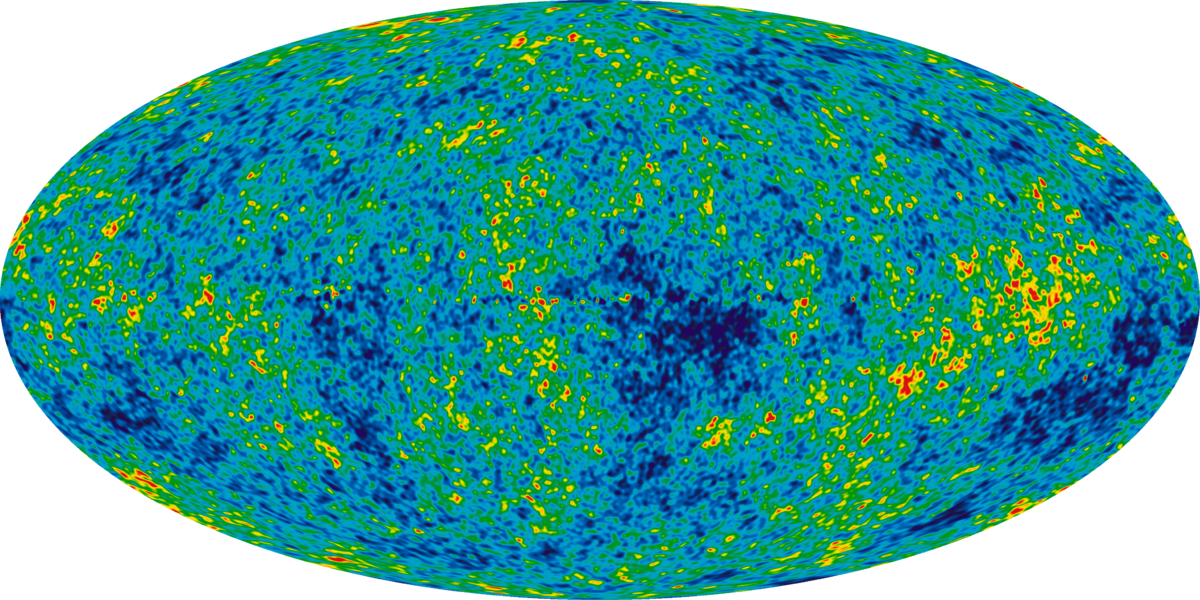 Scientists theorise that the universe commenced with a 'hot Big Bang' of energy and matter. The universe continues to expand in space today. A good model for this is blowing up a balloon; all points on the skin of the balloon move away from all other points.
Scientists theorise that the universe commenced with a 'hot Big Bang' of energy and matter. The universe continues to expand in space today. A good model for this is blowing up a balloon; all points on the skin of the balloon move away from all other points.
Key Concepts
 Gazing out into the sky with a radio telescope reveals that the universe is far more homogenous than we might think. A near constant cosmic microwave background (CMB) radiation can be detected in all directions.
Gazing out into the sky with a radio telescope reveals that the universe is far more homogenous than we might think. A near constant cosmic microwave background (CMB) radiation can be detected in all directions.
Scientists had previously speculated that the universe should contain some electromagnetic radiation left over from the Big Bang. At the beginning of the universe this would have been high energy, high frequency gamma radiation. Over time, cooling and expansion of the universe have caused this radiation to increase in wavelength to become the microwave frequency we observe today.
CMB radiation should be considered isotropic with an absolute temperature of approximately 2.76 K.
Bizarrely it is almost always shown with magnified colour variations. This image shows a truer measurement!

How much of Cosmology have you understood?


 The observed wavelength of waves emitted by a body depends on the relative motion between source and observer.
The observed wavelength of waves emitted by a body depends on the relative motion between source and observer. The same is true with light. The absorption spectrum of light from a star will be redshifted for a star that is receding relative to Earth. Blueshift occurs for stars approaching Earth.
The same is true with light. The absorption spectrum of light from a star will be redshifted for a star that is receding relative to Earth. Blueshift occurs for stars approaching Earth.
 Twitter
Twitter  Facebook
Facebook  LinkedIn
LinkedIn